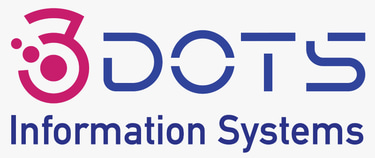10 Essential Tips to Secure Your Network Infrastructure
Network Security
9/15/20252 min read


Understanding Network Security
In today's increasingly digital world, safeguarding your network infrastructure is paramount. Network security encompasses a variety of policies, procedures, and tools designed to protect the integrity, confidentiality, and accessibility of your information technology environment. As cyber threats become more sophisticated, it is vital for organizations of all sizes to bolster their defenses and ensure that their network infrastructure remains secure.
Tip 1: Implement Strong Password Policies
One of the simplest yet most effective ways to secure your network is by enforcing strong password policies. Encourage users to create complex passwords that combine upper and lower case letters, numbers, and special characters. Additionally, mandate regular password changes to further enhance security.
Tip 2: Use Network Firewalls
Network firewalls serve as a crucial line of defense against unauthorized access. Ensure your organization employs both hardware and software firewalls to monitor incoming and outgoing traffic and block any suspicious activity. This layer of protection helps prevent cyber attackers from exploiting vulnerabilities in your network.
Tip 3: Regular Software Updates
Keeping your software up to date is vital in maintaining network security. Software vendors frequently release updates that patch security vulnerabilities. By regularly updating your operating systems, applications, and network devices, you minimize the risk of cyber threats taking advantage of outdated software.
Tip 4: Implement Intrusion Detection Systems
Consider deploying intrusion detection systems (IDS) to monitor your network for inappropriate or anomalous activity. An IDS can analyze traffic patterns and detect unauthorized access attempts, allowing for a swift response to potential threats and improving overall network security.
Tip 5: Promote Security Awareness Training
Your network security is only as strong as your weakest link—a user unaware of security best practices. Conduct regular training sessions to educate your employees about the importance of security measures, phishing scams, and safe browsing behaviors to enhance your network's overall protection.
Tip 6: Limit User Access
Implement the principle of least privilege (PoLP) by restricting user access levels based on their need for information. By limiting access permissions, especially for sensitive data and critical systems, you can greatly reduce the risk of insider threats or accidental data leaks.
Tip 7: Secure Physical Access
Network infrastructure security extends beyond digital measures. Ensure that physical access to networking equipment is restricted. Deploy surveillance cameras and access control systems to monitor who enters sensitive areas, such as server rooms, to protect against physical tampering.
Tip 8: Back Up Essential Data
Regularly back up essential data to an offsite location or cloud storage. This precaution helps prevent data loss due to ransomware attacks or hardware failures. In case of an incident, having secure backups will enable quicker recovery and minimize downtime.
Tip 9: Establish a Response Plan
An incident response plan is crucial for addressing security breaches in a timely manner. Develop a clear, well-structured plan outlining roles and responsibilities, communication protocols, and mitigation actions. Regularly test the plan to ensure your team is prepared for any eventuality.
Tip 10: Conduct Regular Security Audits
Finally, conducting regular security audits of your network infrastructure is essential. These assessments help identify vulnerabilities and measure the effectiveness of existing security measures. By proactively addressing any weaknesses, your organization can stay ahead of potential cyber threats.
